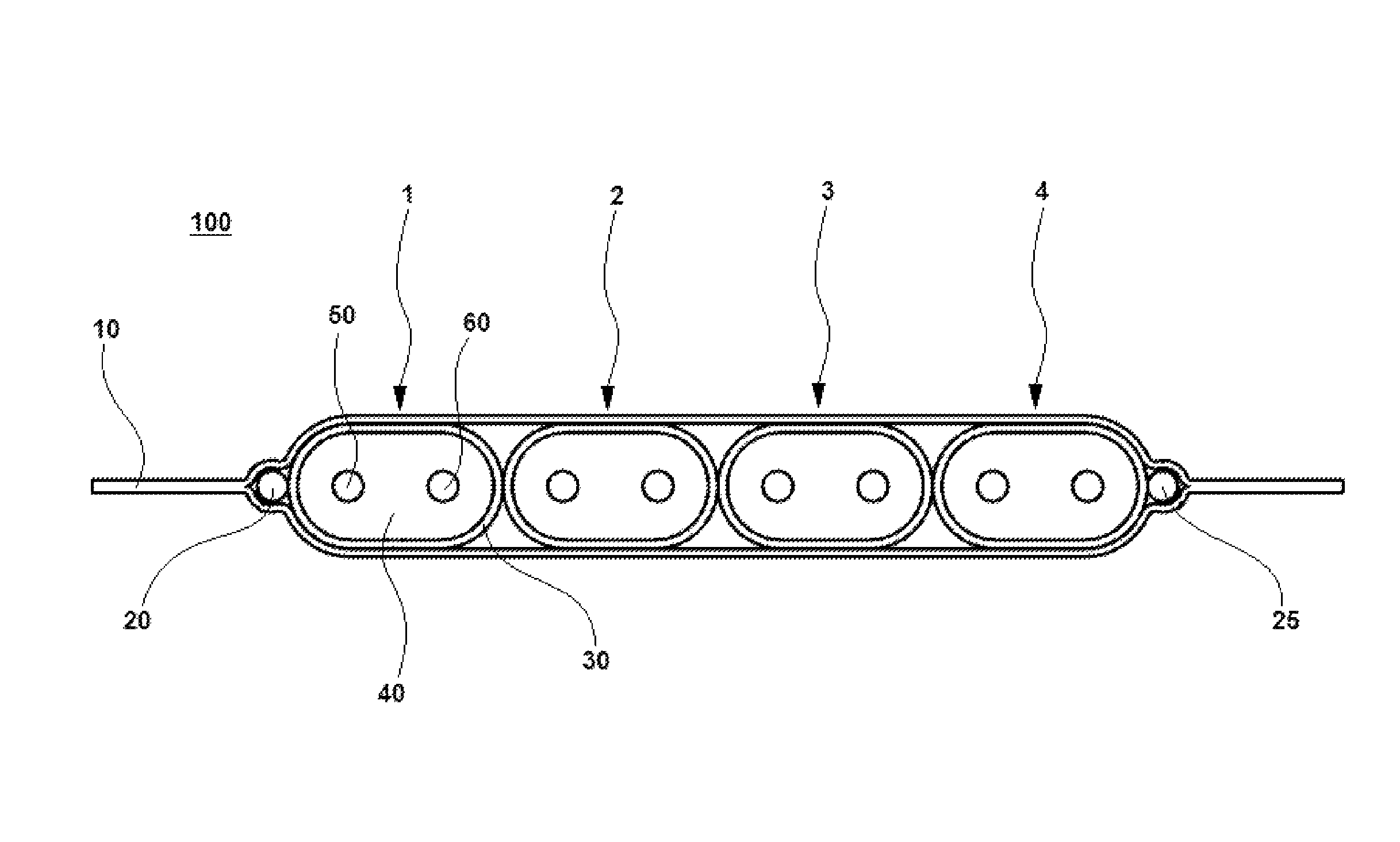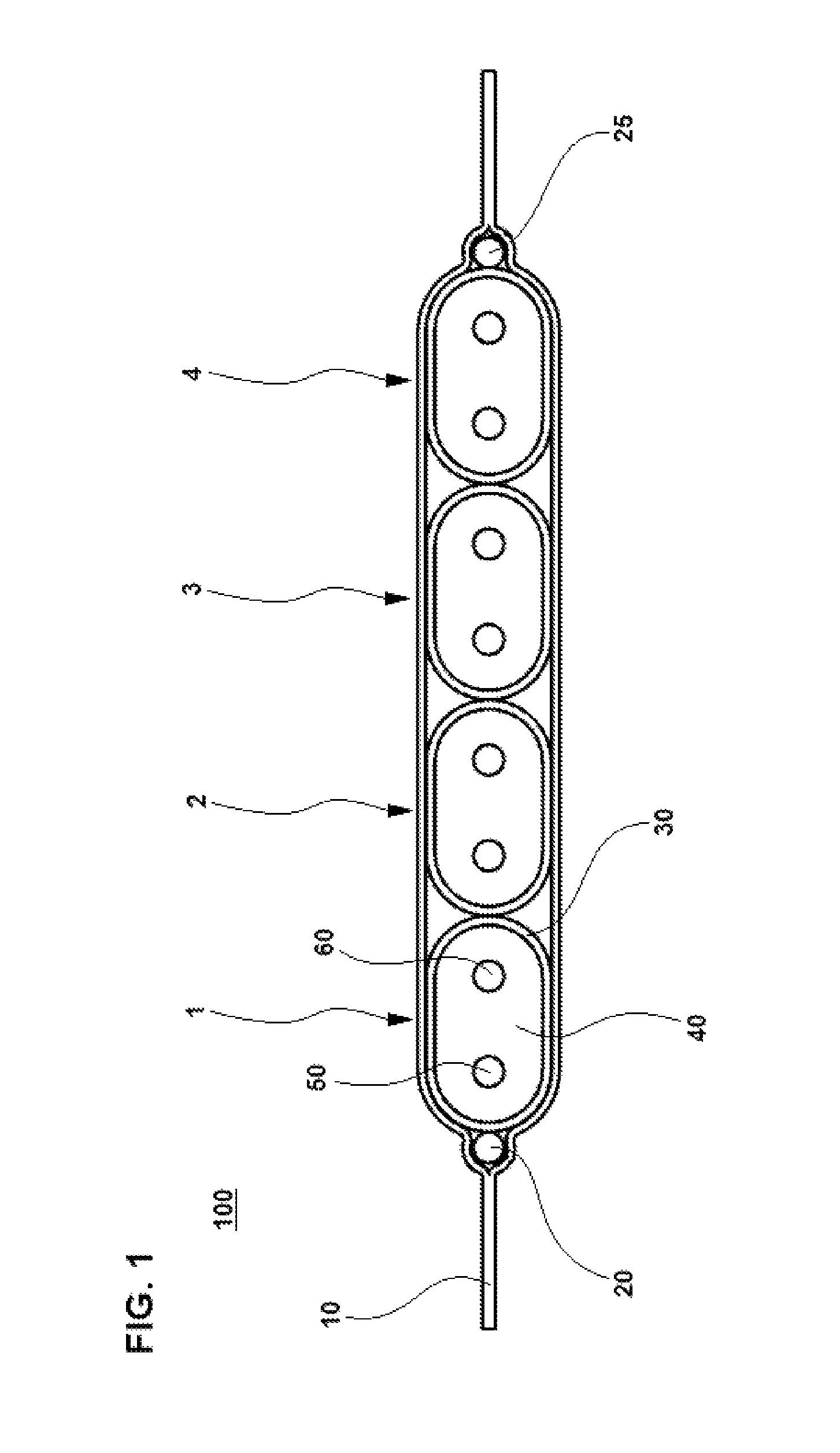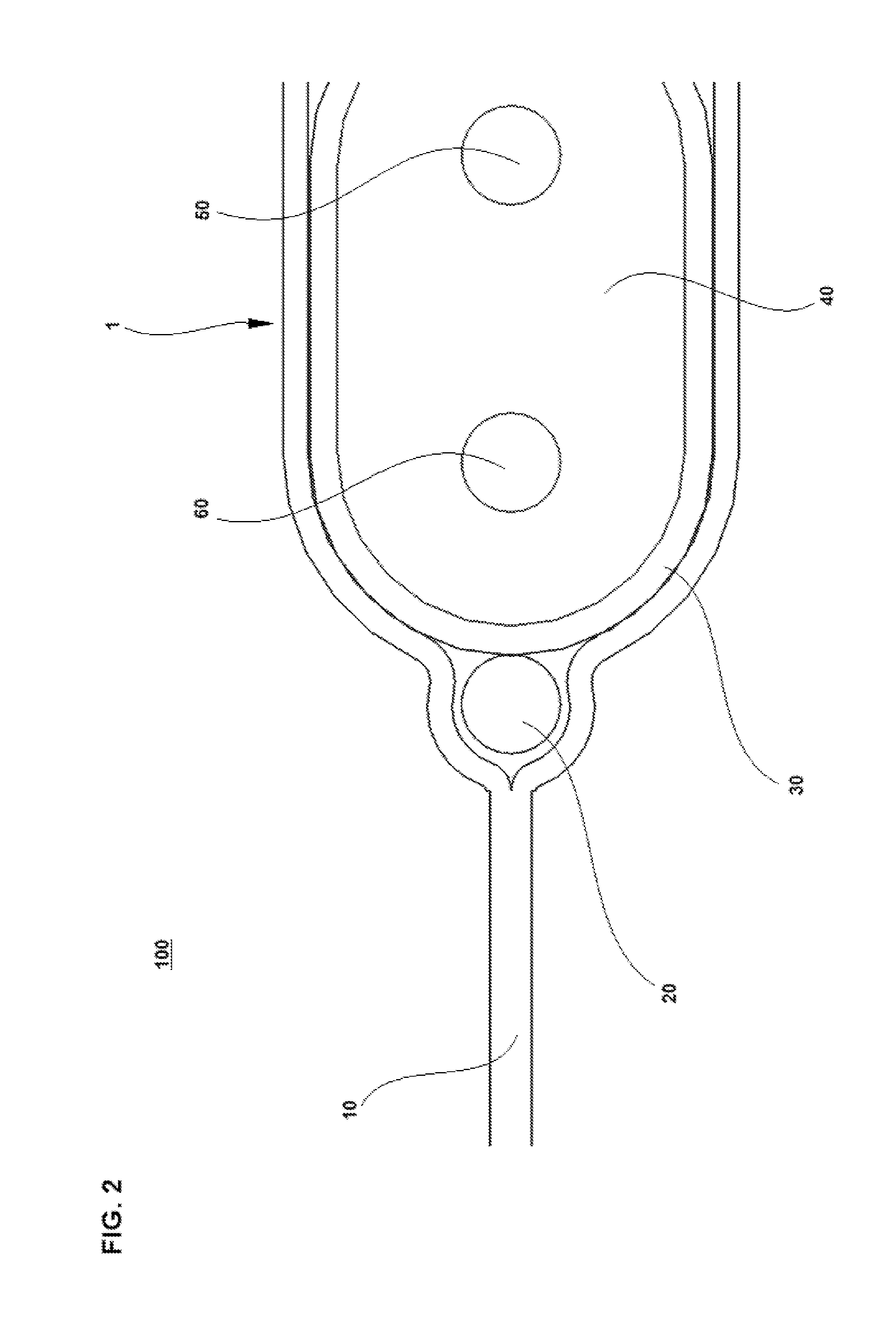Twinaxial cable and twinaxial cable ribbon
a twin-axial cable and ribbon technology, applied in the field of twin-axial cables, can solve the problems of high cost, high cost, and high cost of connecting the conventional twin-axial cable ribbon , achieve the effects of low cost, high signal integrity and quality, and high speed
- Summary
- Abstract
- Description
- Claims
- Application Information
AI Technical Summary
Benefits of technology
Problems solved by technology
Method used
Image
Examples
Embodiment Construction
[0048]Preferred embodiments of the present invention will now be described with reference to FIGS. 1 to 6 and FIGS. 9A-12D. FIGS. 1 to 3 show a twinaxial cable ribbon 100 according to a preferred embodiment of the present invention. FIG. 4 shows a circuit board 200 according to a preferred embodiment of the present invention. FIGS. 5 and 6 show the twinaxial cable ribbon 100 shown in FIGS. 1 to 3 connected to the circuit board 200 shown in FIG. 4 according to a preferred embodiment of the present invention. FIGS. 9A-12D show the twinaxial ribbon 100 with various connectors according to several preferred embodiments of the present invention.
[0049]FIG. 1 shows a cross-sectional view of the twinaxial cable ribbon 100 according to a preferred embodiment of the present invention. The twinaxial cable ribbon 100 includes an outer layer 10, at least one drain wire 20, and at least one twinaxial cable 1. Twinaxial cable 1 includes a conductive shield 30, an insulator 40, a first conductor 50...
PUM
| Property | Measurement | Unit |
|---|---|---|
| center-to-center distance | aaaaa | aaaaa |
| distance | aaaaa | aaaaa |
| distances | aaaaa | aaaaa |
Abstract
Description
Claims
Application Information
 Login to View More
Login to View More - R&D
- Intellectual Property
- Life Sciences
- Materials
- Tech Scout
- Unparalleled Data Quality
- Higher Quality Content
- 60% Fewer Hallucinations
Browse by: Latest US Patents, China's latest patents, Technical Efficacy Thesaurus, Application Domain, Technology Topic, Popular Technical Reports.
© 2025 PatSnap. All rights reserved.Legal|Privacy policy|Modern Slavery Act Transparency Statement|Sitemap|About US| Contact US: help@patsnap.com



